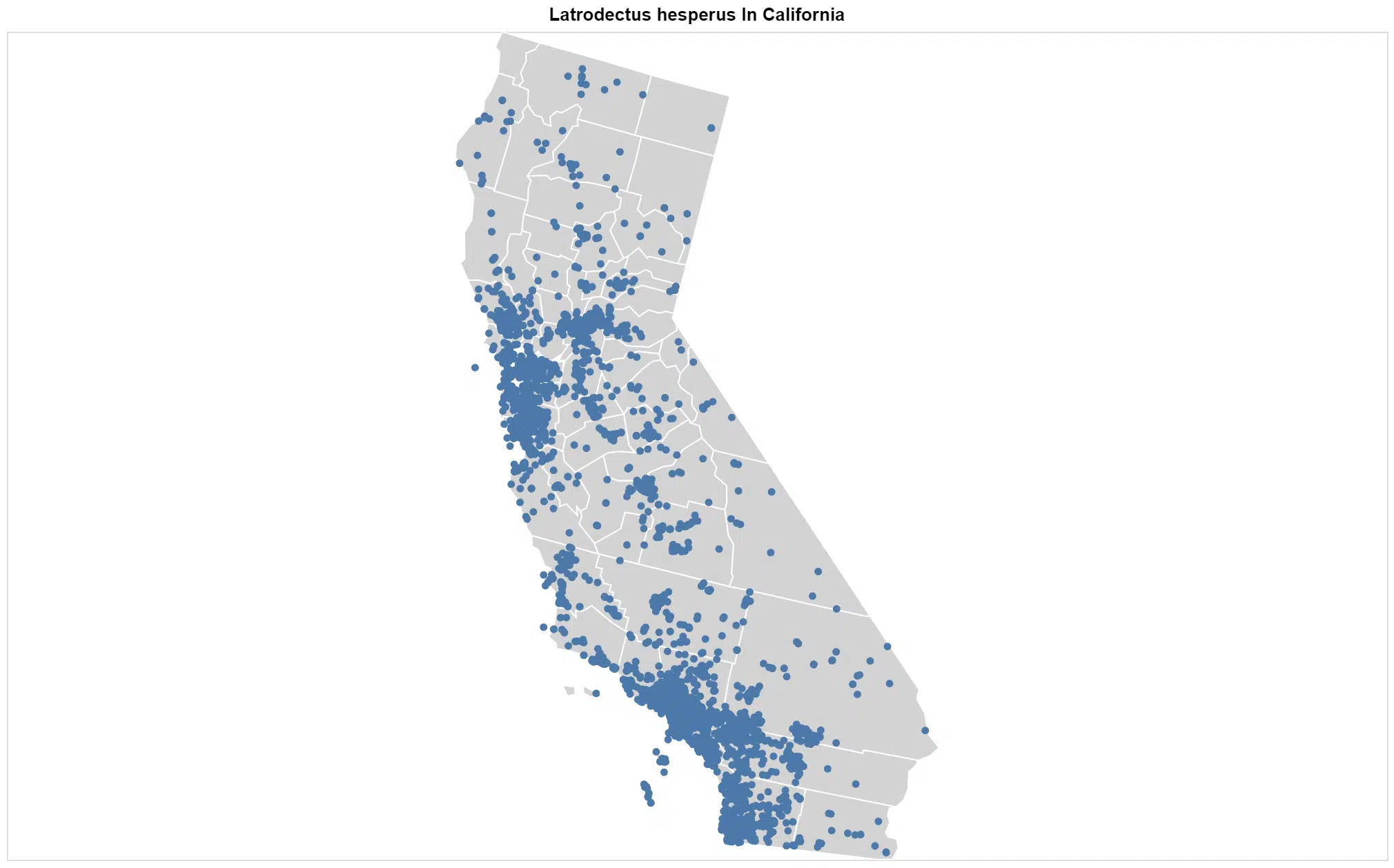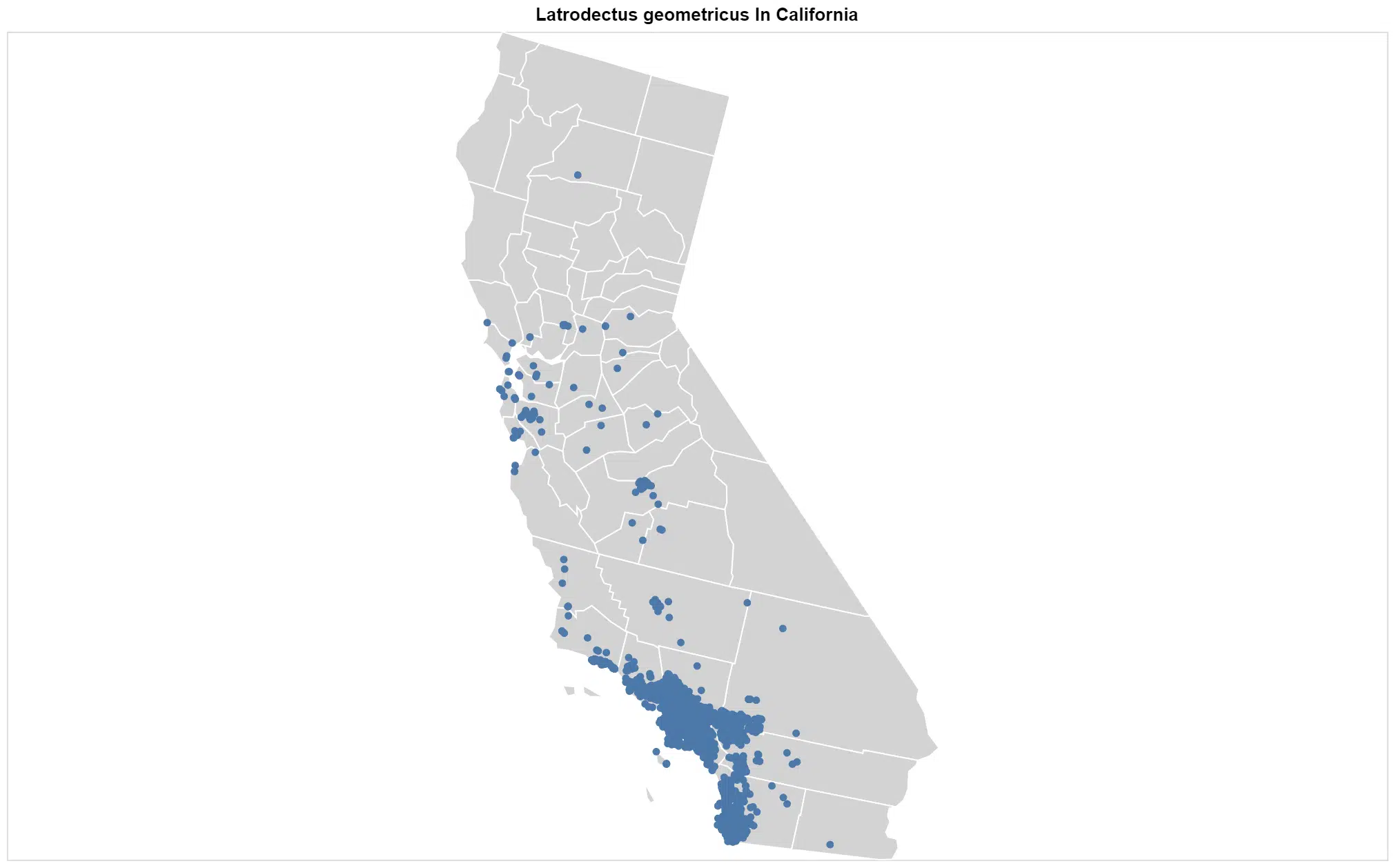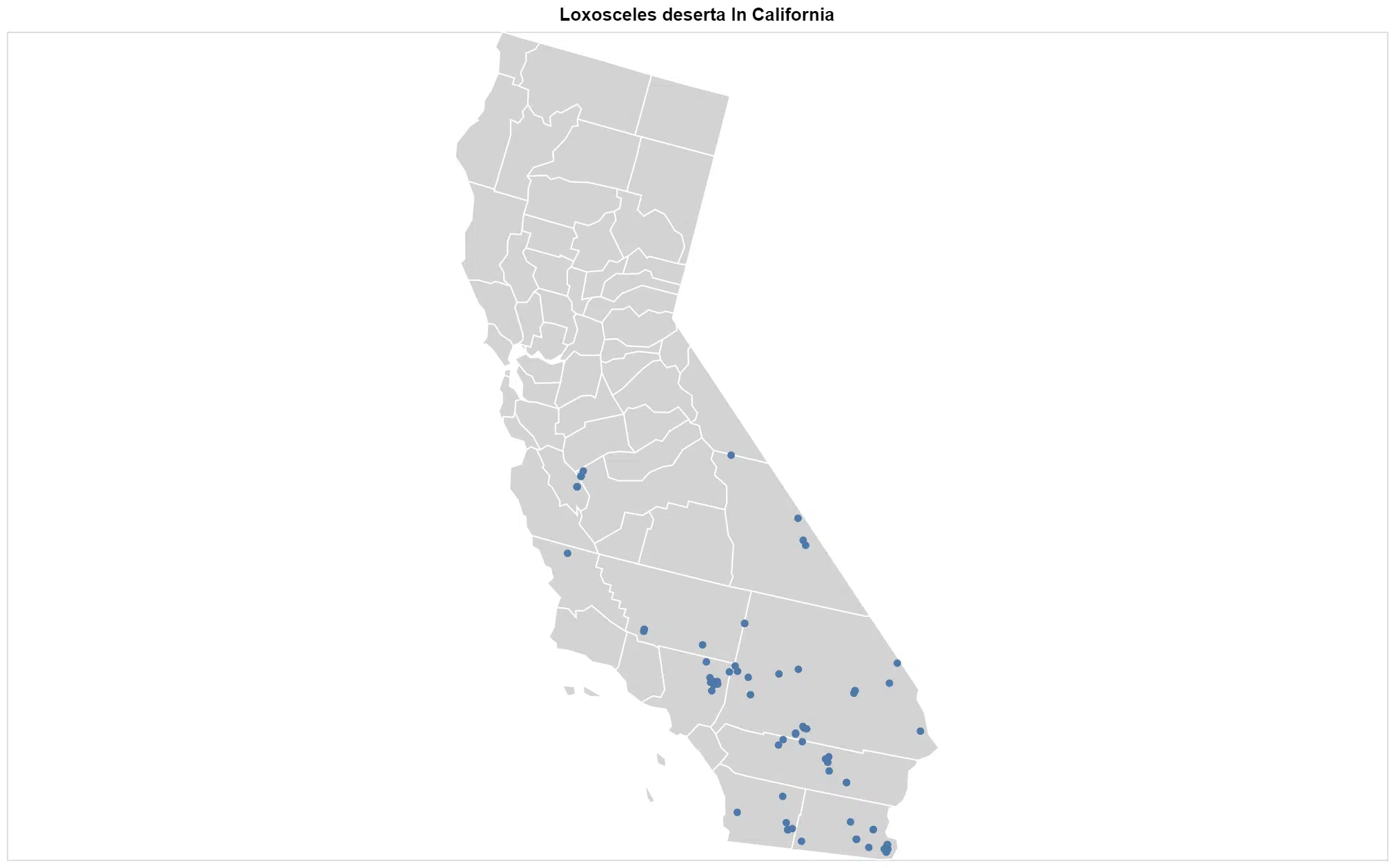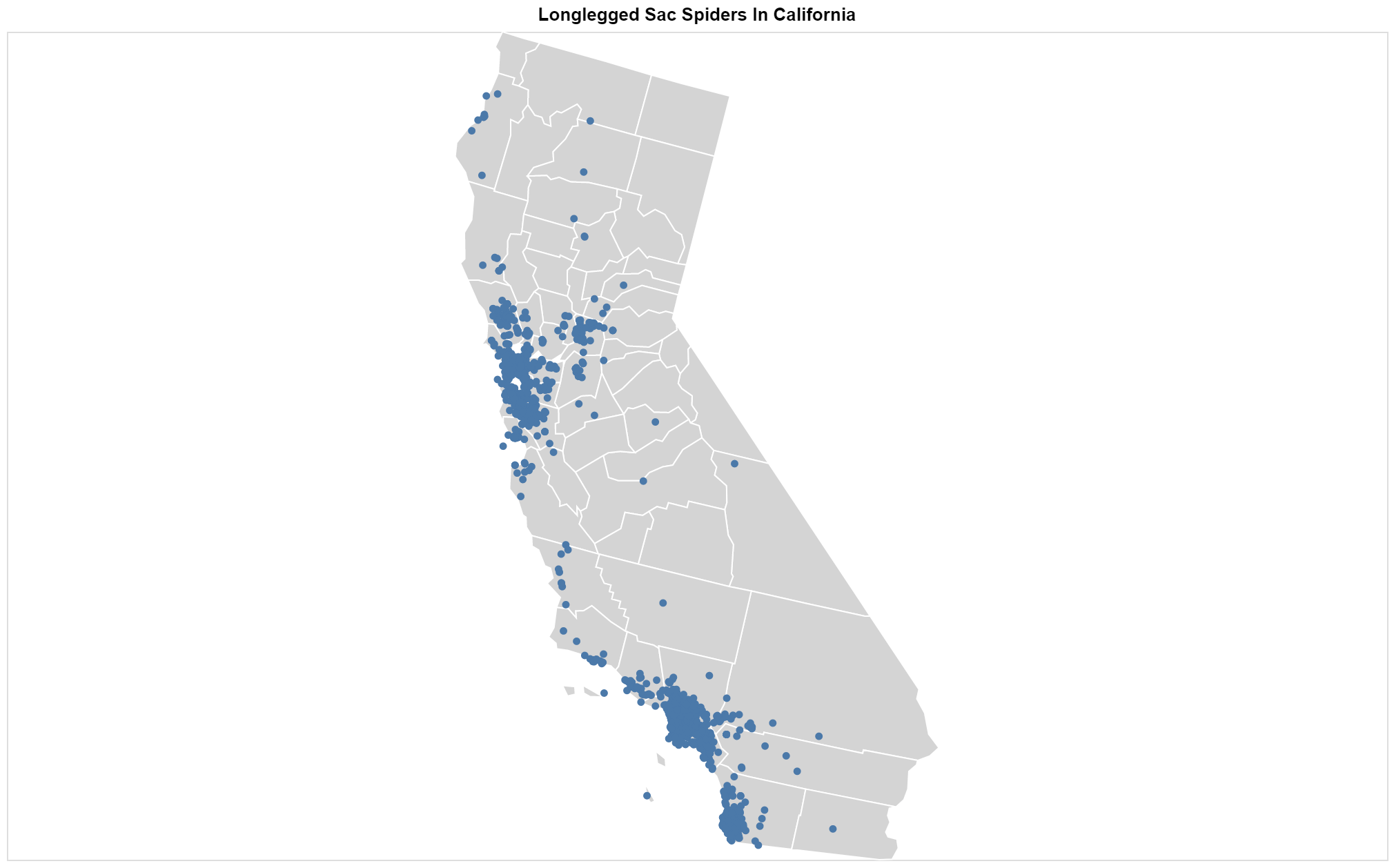California is home to several species of venomous spider. In this article, we’ll describe some of the most significant species, and explain what to do in the unlikely event that you’re bitten by one of these fascinating and elusive creatures.
Poisonous Spiders vs Venomous Spiders – What’s the Difference?
When we see a spider we’re not familiar with, often the first question we ask is “is it poisonous?”.
The answer is more complicated than it may at first seem because while the majority of spiders are poisonous, only a few are considered venomous.
The terms “poison” and “venom” are often used interchangeably in everyday life, but when referring to spiders each one means something quite different.
Poisonous spiders only release their toxin when they’re eaten, inhaled by accident, or crushed onto the skin or other body tissue. As a result, they rarely cause issues for humans.
Venomous spiders inject their toxin through a structure known as a chelicera, which works like fangs. While it is wise to be cautious around these kinds of spiders, the fact is that they are timid around humans, and would prefer to run away, hide, or feign death rather than bite.
And this makes good sense – because once a spider has injected its venom, it takes time to replace. While this is happening, the spider is at risk from other creatures who prey on it or may even starve to death as it’s unable to hunt effectively for food. Biting a human is truly the last line of defense.
Types Of Venomous Spiders in California
1. Western Black Widow

Appearance
The characteristic feature of all widows is a red or orange mark in the shape of an hourglass on the underside of their abdomen. In western widows (Latrodectus Hesperus), this can vary somewhat looking like two distinct dots, a rectangle, or being so faint as to be barely visible.
In addition, the color of the marking may intensify or fade at any stage in a western widow’s life. Immature females can be gray or light brown, with bands of a darker shade – but they will still have the distinctive hourglass markings.
Mature western widow females are shiny and round, usually black but sometimes dark brown. They are small, only reaching 1/4″ to 1/3″.

Males are even smaller, only reaching 1/2 to 1/3 of the size of the female, with a more elongated body and without the rounded abdomen of the female.
They tend to be pale brown or gray, with a banded pattern, and their hourglass markings will likely be orange or even yellow.
Surprisingly, the males tend to resemble immature females.
Habitat
Like most widow spiders, they select spots near to the ground to nest, in dark areas where they can live undisturbed – for example in the abandoned burrows of small animals, or under woodpiles.
Distribution

The Western Black widow is found throughout California, but is more concentrated in the south-western parts of the state, often being found close to the Pacific coast.
Its habitat extends to the south-western states of Canada, as well as much of Mexico.
Life-cycle and Habits
Western widows females lay up to 200 eggs at a time, in a sac that is attached to her web. The sac is pear-shaped and can be pale yellow to brown.
The eggs hatch about 2 weeks after they are laid and the “spiderlings,” leave the sac after a few days by cutting an opening with their fangs. They stay clustered near their mother until the yolk leftover from the egg stage is completely digested.

They then leave the egg sac, and disperse by “ballooning” – they produce small silk strands that allow them to be caught by wind currents and be carried away.
Sadly, most spiderlings die before they’re able to produce a web and capture insects to feed on. Females typically mature in 4 to 6 months, males develop more rapidly.
In laboratories, females can live over a year after becoming mature, while males rarely survive more than a few weeks.
During cold weather, widows seek shelter under stones or other cover.
How to Spot a Western Black Widow Spider’s Web

Western Black Widows create sticky irregular shaped web, typical of what we think of as witches’ cobwebs. These are quite distinct from the symmetrical web built by orb-weaving spiders (Araneidae) or the dense and patterned web of the common funnel-web spider family.
If you spot an egg sac, you can be sure that a mother Western Black Widow will be close by to protect her brood, so take care not to disturb her.
Further Reading:
2. Brown Widow

Appearance
The Brown Widow (Latrodectus geometricus) is usually a mottled brown with contrasting black markings. Interestingly, it can change color when it molts, to blend in with the substrate it’s living on.
The body length of males, 2-4 mm is much smaller than females whose body length is 7-10 mm.
Mature females typically have a dorsal stripe lengthways on their abdomen. They also have three diagonal stripes on each side, and at the top of each stripe, is a distinctive square black mark.
The hourglass of the brown widow spider is usually orange rather than the striking red of a black widow.
The brown widow looks similar to immatures of the western black widow spider and it takes some experience to tell brown widows from immature black widows.
Distribution

The brown widow spider is not indigenous to the USA. It was first reported in Southern California in early 2000 and is now well-established in urban Los Angeles and San Diego.
The distribution is becoming more widespread and it appears to be moving north into Central California.
So, what are its origins? The brown widow is thought to have migrated from Africa although it was first thought to be from South America. What is known is that it is a spider that flourishes in tropical and subtropical regions.
It is now found in Hawaii, Florida, the Caribbean Islands, Australia, South Africa, Japan, and Cyprus. In the US, the Brown Widow Spider was confined to the Florida peninsula for many years, but from 2000, it started to spread and is now found in Texas, Georgia, and South Carolina.
The first California specimens were found in Torrance in 2003 and since then the Brown Widow has been found in increasing numbers in the counties of Los Angeles, Orange, and San Diego.
Habitat
The Brown Widow nests in secluded spots around homes and bushes.
They’re more of an “urban” spider than Western Black Widows, so may construct webs in empty containers (buckets and plant pots), unused mailboxes, roof and crawl spaces, in outhouses and garages, underneath motor vehicle and outdoor furniture, and between wrought iron railings.
Because of this adaptability, there’s more of a risk of unwelcome interactions with humans and therefore of bites.
Life-cycle and habits
Brown widows are prolific breeders, which perhaps explains why they can spread so rapidly. They lay about 120-150 eggs per sac and can make 20 egg sacs during their lifetime.
How to Spot a Brown Widow’s Web

One way to identify a Brown Widow is via its egg sac, which is unique. Most spider egg sacs look like lemon drops tiny cotton balls with fuzzy edges, whereas the surface of the brown widow is covered with silk spicules.
It has been compared to a large huge pollen grain or a World War II harbor mine – it really can’t be confused with that of another spider.
3. Desert Recluse
Appearance

Males and females are similar in size, with a body length of around ½ inch. Their leg span is between 1.5 inches and 2 inches.
They are typically yellowish-tan in color, with a pale brown abdomen. Their identifying feature is the violin-shaped mark. Also, in common with most recluse spiders, they have six eyes rather than eight.
Distribution

The Desert Recluse (Loxosceles Deserta) is typically found in the hot and humid regions of Southern California, away from urban centers. Populations have been reported further north in the state, as well as in Mexico, Nevada, and Arizona.
Habitat
The Desert Recluse is unlikely to be found indoors. They prefer to live among thick vegetation, and also close to the dens of packrats.
Lifecycle and habits
The Desert Recluse hunts at night and eats small insects – whether dead or alive.
How to Spot a Desert Recluse’s Web
They construct irregularly shaped webs in places where they’re not likely to be disturbed. However, as they are active hunters the web isn’t spun to capture their food.
California Spiders With Skin Reactions
In addition to the three species described above, the bites of certain other spiders may cause a redness reaction. The best known are:
Sac Spiders

Scientific name: Genus Cheiracanthium.
Common name: yellow sac spiders.
There are two common species of this venomous spider the Northern Yellow Sac Spider (Cheiracanthium Mildei) and the Agrarian Sac Spider (Cheiracanthium Inclusum), which are found in the western parts of California, often in urban areas.

The Yellow Sac is a small spider (1/4″), beige or yellow, with dark brown fangs and feet.
The Agrarian Sac Spider is inconspicuous, a pale gray tan color. Its body measures about 3/8 inch and it has long spindly legs.
Sac spiders are night-hunters and live in debris on the ground, but may shelter indoors from the fall. While they generally avoid contact with humans, if they’re threatened their bite is mildly venomous and may be painful, but is not considered dangerous.
Wolf Spiders

Scientific name: Genus Lycosidae.
Common name: wolf spiders.
More than 20 species include Schizocosa mccooki, Koch’s wolf spider (Alopecosa kochi), and the Shoreline wolf spider (Arctosa littoralis). They are found in all parts of California.
Wolf spiders can be 1-2″ long, with hairy legs (hence the name).
They are strong, agile night-time predators. Well-camouflaged, they can be brown or grey, with a cream, black, or even salmon-pink underside.
They hunt small toads and frogs as well as insects, and can devour them in a surprisingly short time.

What to Do When You See a Venomous Spider
Keeping in mind that most spiders are timid and only bite when under severe threat, if you see a spider that you think might bite you, simply take care not to disturb it. Observe from a distance and don’t disturb a web, where the egg sac may be stored.
What To Do If You Are Bitten
Widow spiders are not aggressive. They rarely bite when they’re away from their web, and they only leave their web if they have to. However, when a female feels her eggs are threatened, she will defend them courageously.
Male widows are even less likely to bite than females, and because they’re so small, their venom glands and fangs are unlikely to be strong enough to break human skin.
Their bites usually produce a pin-prick of pain straight away, but possibly nothing more. Slight swelling and redness may develop at the site of the bite.
Widow, Desert Recluse, Sac, and Wolf spider venom contains a neurotoxin (a chemical that affects the nervous system). Symptoms of a bite to look out for include:
- muscle and chest pain or tightness.
- pain which spreads to the abdomen, possibly causing stomach cramps and nausea.
- restlessness, anxiety
- breathing difficulties
- speech difficulties
- excessive sweating
- swelling of the extremities and eyelids (rarely at the site of the bite)
- a burning sensation on the soles of the feet

Sometimes, while there’s only a general sense of discomfort after the bite, acute symptoms can develop over the next 24 hours. Symptoms usually fade after 2 to 3 days but can continue for up to four weeks after the bite.
How To Treat A Spider Bite
As bites are rarely dangerous, you can treat them yourself.
- Clean the bite area with soap and water.
- Apply an ice pack, wrapped in a cloth, to the site.
- Take an over-the-counter pain reliever.
- If the bite is on your arm or leg, elevate it to prevent swelling.
- Apply an antibiotic cream or lotion to the bite.
If possible, kill and collect the spider, so that if your symptoms don’t subside, a medical professional can identify the bite and treat you appropriately.
Based on your condition, a doctor can decide if more treatment is required. In severe cases, muscle relaxants or stronger pain medicine may be prescribed.
In very rare cases, a hospital stay might be needed, or your doctor might inject you with antivenin to neutralize Black Widow venom.
The good news is: Californian spider bites are not fatal!
Just a word of caution – if a child is bitten, you should always seek medical attention immediately. Cats react strongly to spider bites, dogs seem unbothered.
How to Prevent a Spider Infestation
Widow Spiders prefer to live close to the ground in dark places like sheds and garages and only bite when they’re startled or surprised.
Keep storage areas around your home tidy, and take care around woodpiles, fallen tree branches, or other places they may be hiding.
Indoors, nest sites are often constructed in rarely disturbed areas such as behind furniture or under desks. Basement areas and crawl spaces are often colonized by widow spiders.
When discovered, consider whether they present a risk before taking any action to remove them.
Also keep in mind that spiders are useful pest controllers themselves, as they prey on unwanted home invaders such as mosquitos, and ants, etc.
Perhaps it’s better to discourage them by lighting dark corners, and moving the furniture regularly.
If all else fails, they can be destroyed by crushing or vacuuming the web and spider. Outdoors, be sure to wear heavy, leather gloves to protect yourself.
Summary
Although several types of venomous spiders are common in California, they only bite humans when they have no other way to escape or defend themselves. Biting is their last resort.
If you are bitten, this is unlikely to be medically significant, and most bites can be treated with simple first aid measures. Symptoms may appear gradually but subside within 2-3 days.The only time that medical treatment should be sought immediately is if a child is bitten.
Overall, these venomous spiders play a valuable role in controlling other pests, so unless they pose a serious risk to humans, they should be left in peace.
Further Reading: